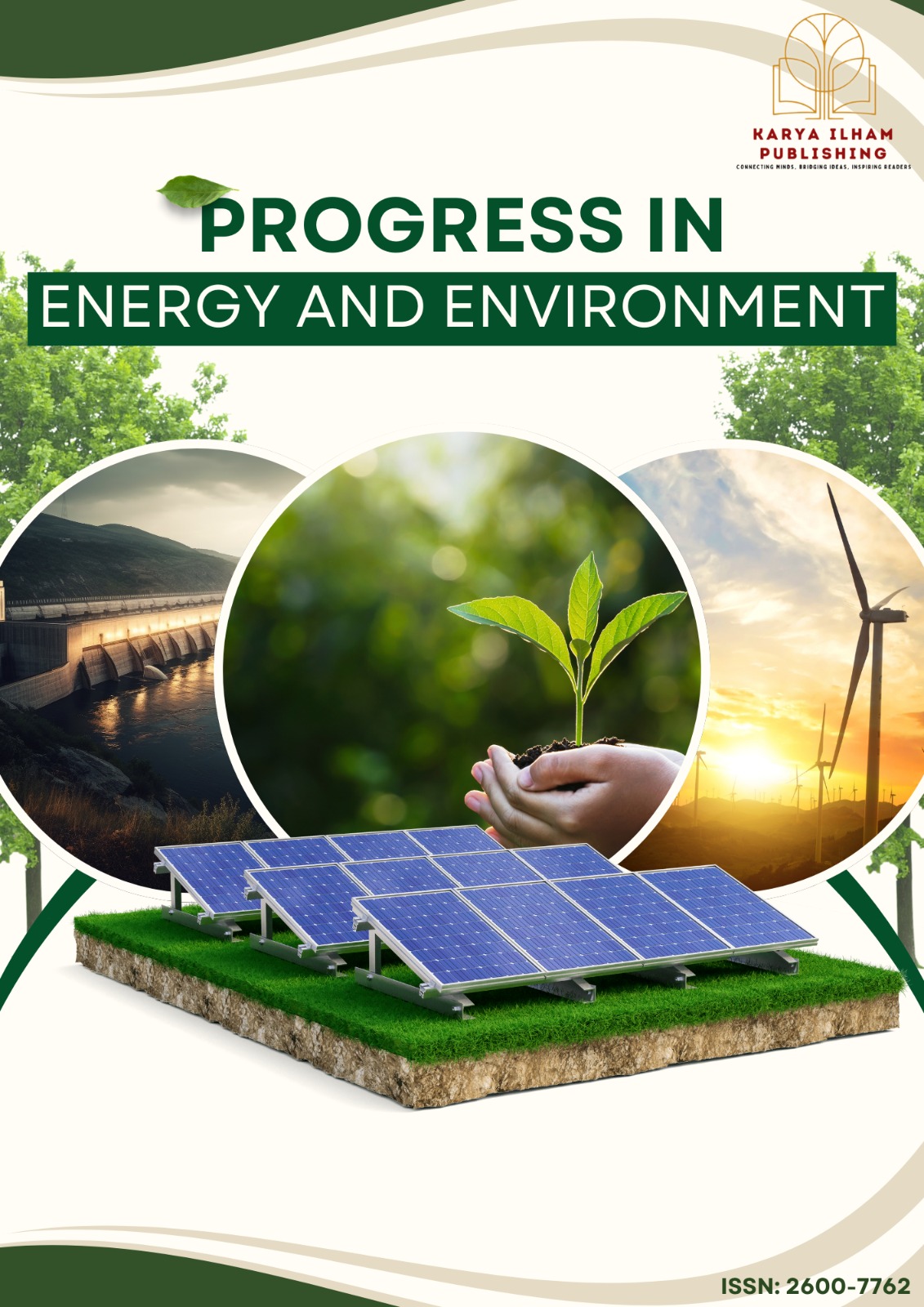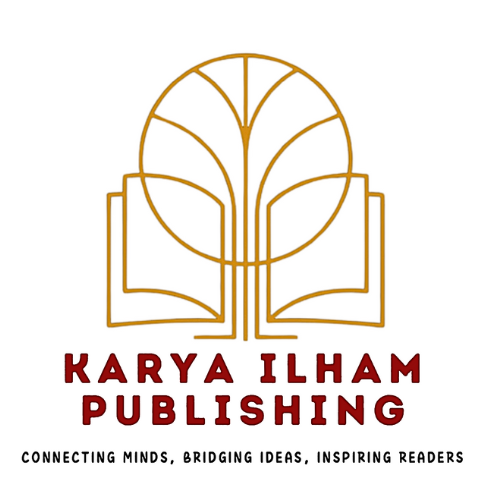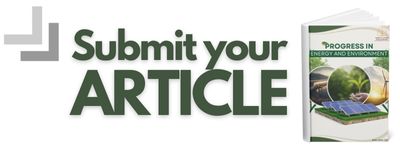The Impact of Urban Traffic Density on The Service Quality and Performance of Public Bus Transport
Kesan Kepadatan Trafik Bandar Terhadap Kualiti Perkhidmatan Dan Prestasi Perkhidmatan Pengangkutan Bas Awam
DOI:
https://doi.org/10.37934/progee.31.2.6778Keywords:
Urban Transportation, Urban Traffic Density, Service Quality, Public Transport Performance, Pengangkutan Bandar, Kepadatan Trafik Bandar, Kualiti Perkhidmatan, Prestasi Pengangkutan AwamAbstract
Population growth and increasing motor vehicles pose significant challenges to urban areas, particularly regarding rising traffic congestion, service quality, and transportation performance. This study aims to analyze the impact of traffic density on the quality of service and public bus transportation performance in urban areas from the perspectives of both passengers and non-passengers. The One-Way ANOVA method examined significant differences between these two groups. The findings indicate that passengers perceive traffic congestion as a cause of travel delays, reduced schedule accuracy, and diminished comfort and satisfaction with bus services. Meanwhile, for non-passengers, traffic congestion remains a major issue affecting urban mobility, as they view the inefficiency of the bus system as a key factor deterring them from using public transportation. Therefore, to enhance the efficiency and attractiveness of public transport, authorities should implement measures such as dedicated bus lanes, real-time arrival monitoring systems, and improvements in infrastructure and route integration with other transportation systems.
Pertumbuhan penduduk dan bilangan kenderaan bermotor menimbulkan cabaran besar bagi kawasan bandar, terutamanya dari segi meningkatkan trafik, kualiti perkhidmatan dan prestasi pengangkutan. Kajian ini bertujuan untuk menganalisis kesan kepadatan trafik terhadap kualiti perkhidmatan dan prestasi pengangkutan bas awam di bandar berdasarkan pada mata penumpang dan bukan penumpang. Kaedah One Way Anova digunakan untuk menguji perbezaan ketara antara kedua-dua golongan. Hasil kajian menunjukkan bahawa penumpang merasakan bahawa kesesakan lalu lintas menyebabkan kelewatan perjalanan, mengurangkan ketepatan jadual, serta menjejaskan keselesaan dan kepuasan mereka terhadap perkhidmatan bas. Sementara itu, bagi bukan penumpang, kesesakan lalu lintas tetap menjadi isu utama yang mempengaruhi mobiliti bandar, di mana mereka melihat ketidakcekapan sistem bas sebagai salah satu faktor yang menghalang mereka daripada menggunakan pengangkutan awam. Oleh itu, bagi meningkatkan kecekapan dan daya tarikan pengangkutan awam, pihak berkuasa perlu mengambil langkah seperti menyediakan laluan khas bas, memperkenalkan sistem pemantauan waktu ketibaan secara real-time, serta memperbaiki infrastruktur dan integrasi laluan bas dengan sistem pengangkutan yang lain.
References
[1] D.Q. Nguyen-Phuoc, W. Young, G. Currie, and C. De Gruyter, Traffic Congestion Relief Associated with Public Transport: State-of-the-Art, Public Transport 12 (2020) 455–481. https://doi.org/10.1007/s12469-020-00231-3.
[2] A.Y. Nurhidayat, H. Widyastuti, Sutikno, D.P. Upahita, and A. Roschyntawati, Impact of Traffic Volume on the Pollution Cost, Value of Time, and Travel Time Cost in Jakarta City Centre Area, Civil Engineering and Architecture 11 (2023) 3209–3220. https://doi.org/10.13189/cea.2023.110830.
[3] F. Qiao, T. Liu, H. Sun, L. Guo, and Y. Chen, Modelling and Simulation of Urban Traffic Systems: Present and Future, International Journal of Cybernetics and Cyber-Physical Systems 1 (2021) 1. https://doi.org/10.1504/ijccps.2021.113100.
[4] Y. Su, H. Ghaderi, and H. Dia, The Role of Traffic Simulation in Shaping Effective and Sustainable Innovative Urban Delivery Interventions, EURO Journal on Transportation and Logistics 13 (2024). https://doi.org/10.1016/j.ejtl.2024.100130.
[5] H.B. Faheem, A.M. El Shorbagy, and M.E. Gabr, Impact Of Traffic Congestion on Transportation System: Challenges and Remediations - A Review, Mansoura Engineering Journal 49 (2024). https://doi.org/10.58491/2735-4202.3191.
[6] W.H. Chen, M. Carrera Uribe, E.E. Kwon, K.Y.A. Lin, Y.K. Park, L. Ding, and L.H. Saw, A Comprehensive Review of Thermoelectric Generation Optimization by Statistical Approach: Taguchi Method, Analysis of Variance (ANOVA), and Response Surface Methodology (RSM), Renewable and Sustainable Energy Reviews 169 (2022). https://doi.org/10.1016/j.rser.2022.112917.
[7] I.S. Chen, A Combined MCDM Model Based on DEMATEL and ANP for the Selection of Airline Service Quality Improvement Criteria: A Study Based on the Taiwanese Airline Industry, Journal of Air Transport Management 57 (2016) 7–18. https://doi.org/10.1016/j.jairtraman.2016.07.004.
[8] M. Sekarsari, and H. Dwiatmoko, Impact of Traffic Congestion on Road Users in Tangerang City Impact of Traffic Congestion on Road Users in Tangerang City, E-Jurnal UIKA Bogor 11 (2022) 608–615. https://doi.org/10.32832/astonjadro.v11i3.
[9] D. Albalate, M. Borsati, and A. Gragera, Free Rides to Cleaner Air? Examining the Impact of Massive Public Transport Fare Discounts on Air Quality, Economics of Transportation 40 (2024) 100380. https://doi.org/10.1016/j.ecotra.2024.100380.
[10] D. Albalate, and G. Bel, Tourism and Urban Public Transport: Holding Demand Pressure under Supply Constraints, Tourism Management 31 (2010) 425–433. https://doi.org/10.1016/j.tourman.2009.04.011.
[11] E. Munch, Social Norms on Working Hours and Peak Times in Public Transport, Time and Society 29 (2020) 836–865. https://doi.org/10.1177/0961463X20905478.
[12] V. Lukic Vujadinovic, A. Damnjanovic, A. Cakic, D.R. Petkovic, M. Prelevic, V. Pantovic, M. Stojanovic, D. Vidojevic, D. Vranjes, and I. Bodolo, AI-Driven Approach for Enhancing Sustainability in Urban Public Transportation, Sustainability 16 (2024) 7763. https://doi.org/10.3390/su16177763.
[13] T. Horiike, K. Yoh, K. Doi, and C.C. Chou, Assessing the Hierarchical Diversity of Public Transportation Considering Connectivity and Its Implication on Regional Sustainability, Sustainability (Switzerland) 15 (2023). https://doi.org/10.3390/su152316494.
[14] S. Seriani, R. Fernandez, N. Luangboriboon, T. Fujiyama, and M. Haghani, Exploring the Effect of Boarding and Alighting Ratio on Passengers’ Behaviour at Metro Stations by Laboratory Experiments, Journal of Advanced Transportation 2019 (2019). https://doi.org/10.1155/2019/6530897.
[15] L. Oliveira, C. Bruen, S. Birrell, and R. Cain, What Passengers Really Want: Assessing the Value of Rail Innovation to Improve Experiences, Transportation Research Interdisciplinary Perspectives 1 (2019). https://doi.org/10.1016/j.trip.2019.100014.
[16] A.M. Das, A. Setiawan, and P. Rozi, Analisis Satisfaction Pengguna Publik Transport Bus Trans Siginjai Jambi, Jurnal Ilmiah Universitas Batanghari Jambi 22 (2022) 374. https://doi.org/10.33087/jiubj.v22i1.2185.
[17] S.Y. Lee, and T.H.M. Le, Evaluating Pavement Performance in Bus Rapid Transit Systems: Lessons from Seoul, South Korea, Case Studies in Construction Materials 18 (2023). https://doi.org/10.1016/j.cscm.2023.e02065.
[18] Prof. Gade S. A, Prof. Pandit R.B, Kalpesh Pawara, Tanveer Pinjari, Girish Patil, and Prakash Datir, Real-Time Tracking System for City Bus Location And Passenger Count, International Journal of Advanced Research in Science, Communication and Technology (2024) 295–302. https://doi.org/10.48175/IJARSCT-22155.
[19] T. Miwa, J. Wang, and T. Morikawa, Are Seniors in Mountainous Areas Able to Realize Their Desired Trips? A Novel Approach to Estimate Trip Demand, Transportation Research Part A: Policy and Practice 175 (2023). https://doi.org/10.1016/j.tra.2023.103776.
[20] David.C. Howell, Statistical Methods for Psychology, 7th ed., Wadswordth Cengage Learning, California, 2010.
[21] P.A. Games, Robust Tests for Homogeneity of Variance, Educational and Psychological Measurement 32 (1972) 887–909.
[22] Levene. H, Robust tests for equality of variances, 1st ed., Contributions to Probability and Statistics; Essays in Honor of Harold Hotelling, Redwood City, CA, Stanford University Press, 1960.

Downloads
Published
Issue
Section
License
Copyright (c) 2025 Progress in Energy and Environment

This work is licensed under a Creative Commons Attribution-NonCommercial 4.0 International License.















